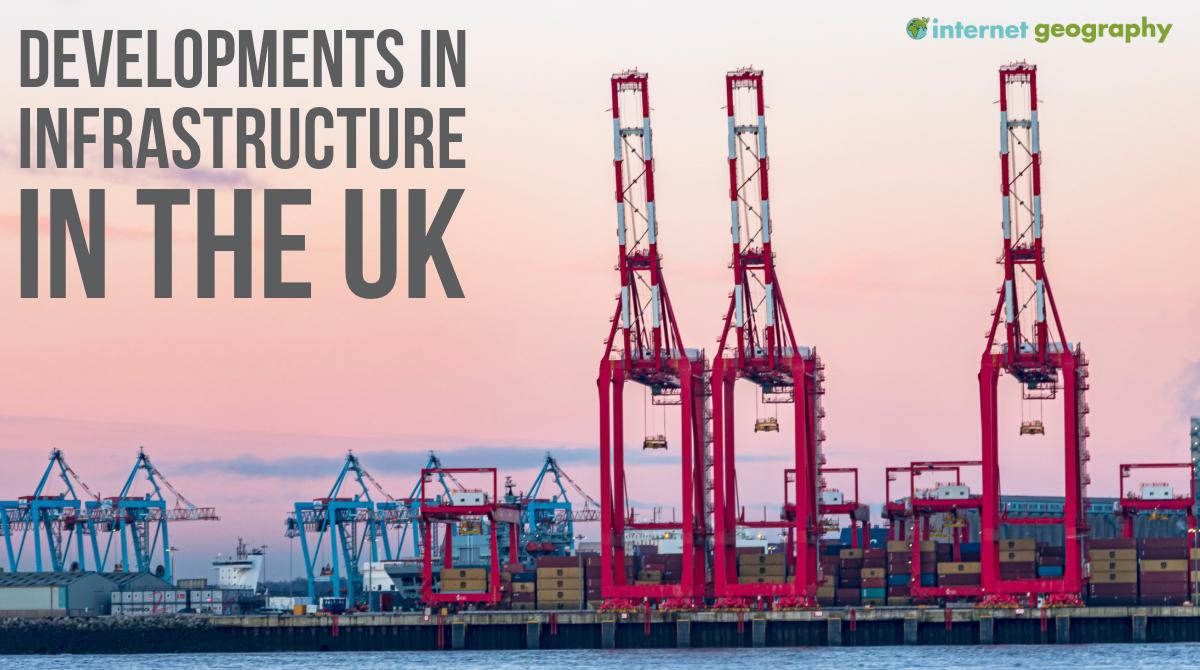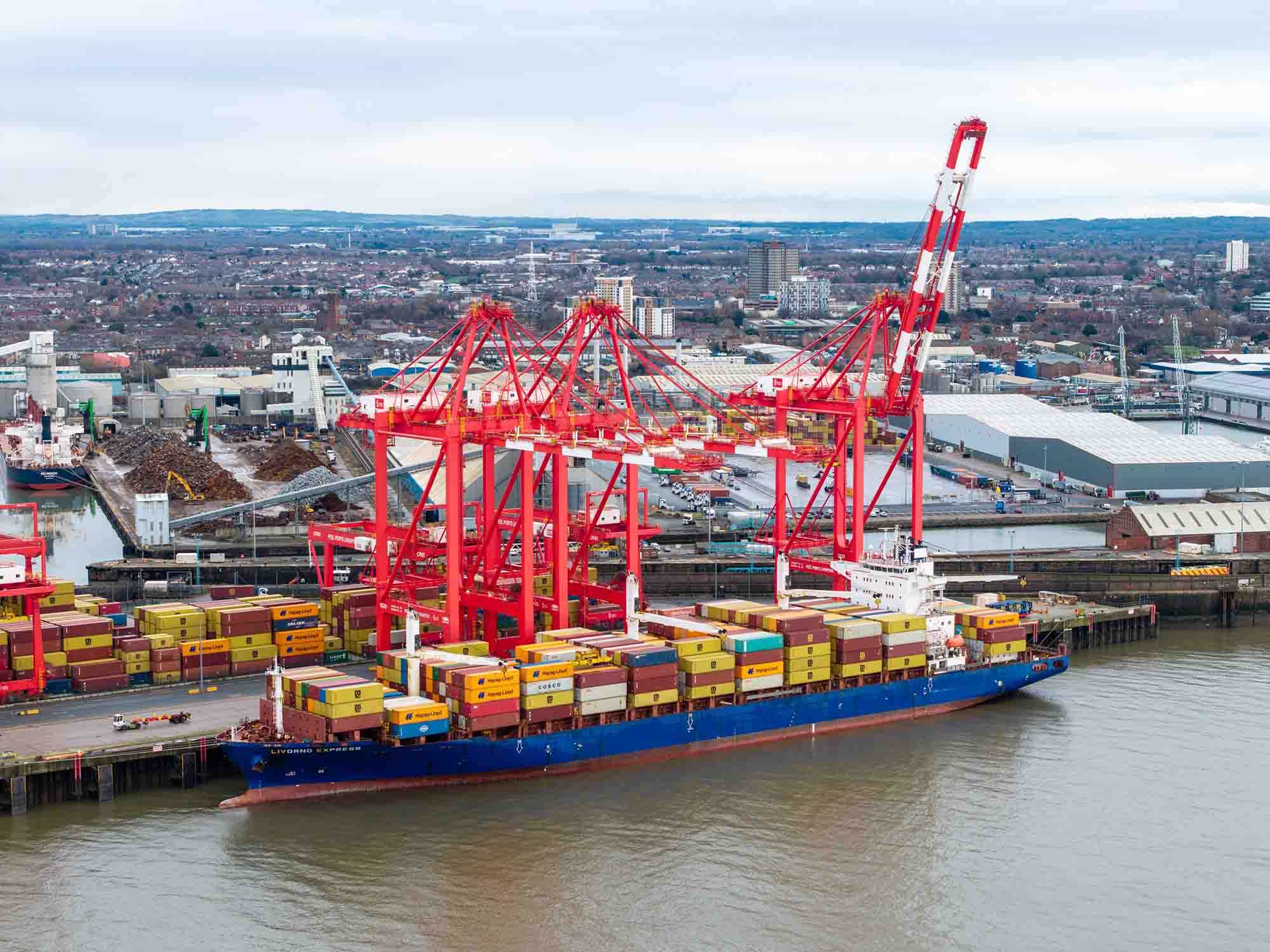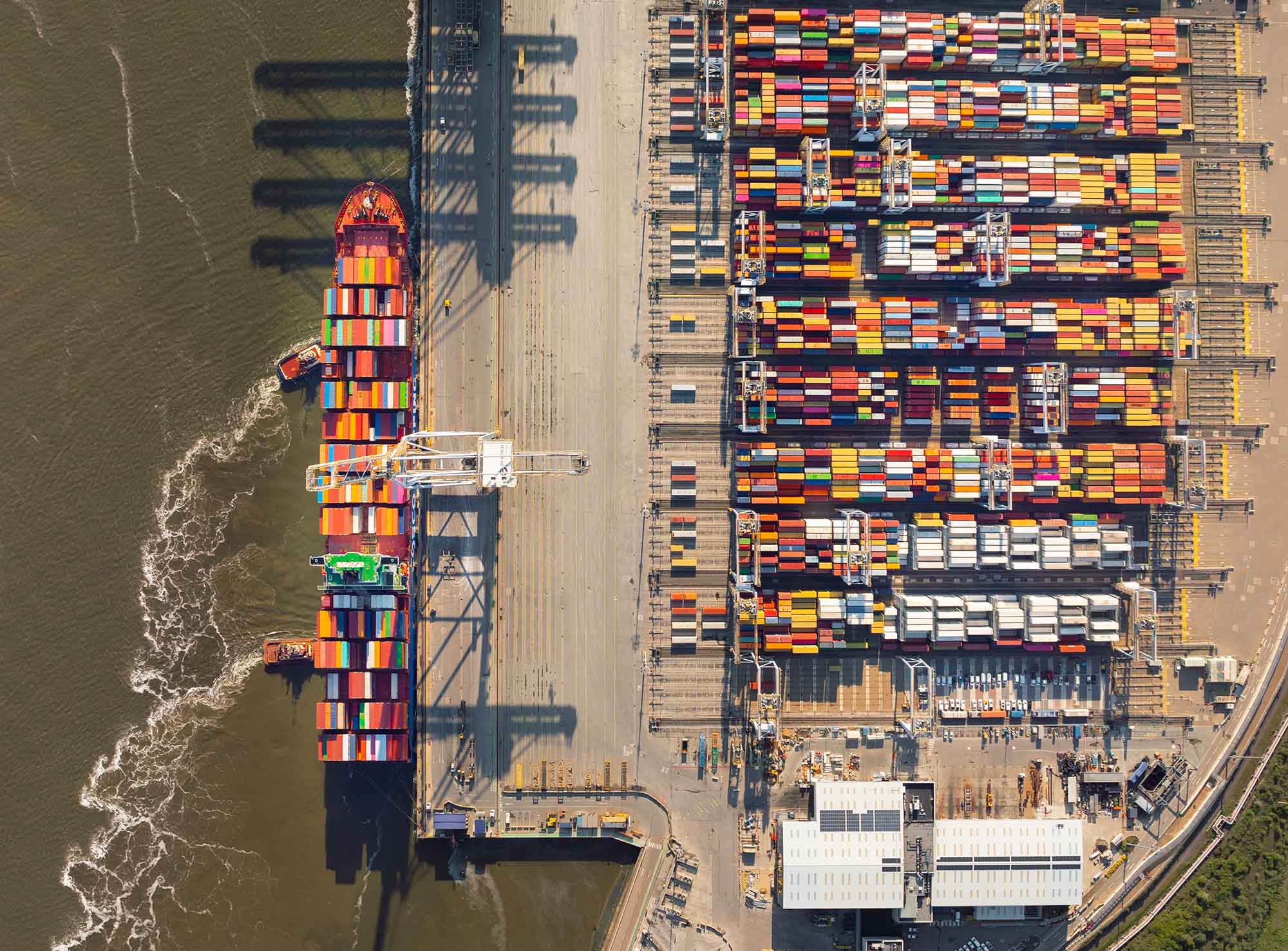Developments in infrastructure in the UK
The UK’s transport infrastructure faces mounting pressure as car ownership rises steadily, and economic development increases demand for rail, port, and airport capacity. Car ownership has been growing consistently, with the number of vehicles on the road exceeding 40 million in 2023, a significant increase from 25 million in the 1980s. This surge in car ownership, combined with population growth, contributes to congested roads, particularly in urban areas, leading to delays and higher pollution levels.
Economic growth, especially in cities such as London and Manchester, has also intensified the demand for efficient transport networks. The rail system, for instance, has seen a dramatic rise in passenger numbers, with over 1.6 billion journeys made by train in 2023/2024 alone, representing a 30% increase since the early 2000s. This growing demand often leads to overcrowding, particularly during peak hours, putting strain on infrastructure and limiting the ability to expand capacity quickly enough.
Ports, including major hubs like the Port of London and the Port of Felixstowe, also face significant capacity challenges. The Port of Felixstowe, the largest in the UK, handles around 40% of the UK’s container traffic, but its ability to expand is limited due to space constraints. Similarly, UK airports like Heathrow operate at or near capacity. Heathrow is the busiest airport in Europe by international passenger traffic, handling more than 80 million passengers annually.
The pressure on these transport networks highlights the need for significant investment and modernisation to accommodate growing demand and ensure continued economic development.
How is the road network being developed?
In 2020, the Government launched the UK’s second five-year Road Investment Strategy (RIS2), which includes a variety of projects designed to improve the Strategic Road Network. This network spans over 4,300 miles of motorways and major A-roads across England. With a £27.4 billion investment, RIS2 aims to enhance national and regional roads, improve connectivity, and drive economic growth. The plan involves:
- Expansion of Smart Motorways: Building on the success of previous smart motorway schemes, RIS2 will continue to expand smart motorways on busy stretches of key routes, improving traffic flow and reducing congestion across major roads like the M25 and M62. However, in April 2023, all planned schemes were withdrawn due to safety concerns associated with flowing traffic on the hard shoulder.
- New Road Schemes: RIS2 includes 52 new road schemes (view map), focusing on enhancing the Strategic Road Network (SRN) to boost connectivity and reduce bottlenecks.
- Additional Lanes on Key Routes: RIS2 will add over 1,300 miles of new lanes on key motorways and major A-roads, including the M3, M6, and A14, to improve capacity and reduce congestion.
- Sustainability and Electric Vehicle Support: The strategy also focuses on sustainable road improvements, including provisions for electric vehicle charging infrastructure to support the transition to greener transport.
- Focus on Regional Connectivity: RIS2 prioritises improving connections between regions. Projects aimed at easing travel between the North and South, such as the upgrades to the A57 and A69, help to support economic growth across the country.
These developments will improve the capacity of the UK’s roads and create up to 64,000 jobs in construction, boosting local and regional economies through the multiplier effect.
How is the rail network being developed?
Investments in the rail network have increased during the twenty-first century to relieve road congestion and help encourage economic growth. Examples include the completion of Cross Rail (The Elizabeth Line), the electrification of the Trans-Pennine Express, and HS2.
Cross Rail
The Elizabeth Line, or Crossrail, is a major rail project in London designed to improve connectivity across the city, from East to West. After years of delays, the line fully opened in 2022 and is now a vital part of London’s transport network.
- Status: The Elizabeth Line is fully operational and has been providing faster and more efficient services since 2022. It connects key locations such as Heathrow Airport, Canary Wharf, and the West End.
- Benefits: The Elizabeth Line has significantly reduced journey times and eased congestion on the existing Underground network. It provides better access to central London for commuters and tourists alike, enhancing overall capacity and efficiency.
- Future Plans: Although the line is operational, there are plans for future extensions and upgrades to accommodate the increasing number of passengers as demand continues to grow.
Trans-Pennine Express
The Transpennine Route Upgrade is an ambitious project to enhance the rail network between Manchester, Leeds, and York. The upgrade will include electrification, new signalling, and station improvements designed to improve capacity and journey times. Electrification involves building overhead line equipment that will carry electricity to power electric trains.
- Expected Completion: 2030.
- Benefits: The project will provide faster, more regular, and reliable services across the Pennines, enhancing connectivity between the North’s key cities. This is expected to foster economic growth in Northern England by improving access to jobs, education, and services. Electric trains are greener than diesel trains, reducing their carbon footprint and improving air quality. Approximately 87,000 tonnes of carbon emissions will be saved annually. Additionally, there are proposals to increase the number of freight trains by 15, which can potentially remove over 1,000 lorries off the road each year.
- Challenges: Currently, no plans exist to fully electrify the entire Trans-Pennine Express network. The section to the east, connecting Leeds to Hull, has not yet been included in the electrification plans. However, devolution proposals for the Humber region include plans to electrify this line.
High Speed 2 (HS2)
HS2, or High-Speed 2, is a high-speed railway project designed to revolutionise travel between London, the Midlands, and the North of England. Originally conceived to connect London to Manchester and Leeds, the project has undergone revisions in response to escalating costs, environmental concerns, and political factors.
- The Vision: The initial HS2 plan was announced in 2010. Phase 1 was designed to connect London to Birmingham. Phase 2 extended the network further to Manchester and Leeds, forming a ‘Y’-shaped network. The first construction phase began in 2017, with services expected to begin by 2026.
- Revisions to the Route: However, the original route has been revised due to financial and environmental challenges. The northern sections beyond Birmingham have been cancelled, and the project will now terminate in Birmingham rather than extending to Manchester and Leeds. This decision has been influenced by rising costs and shifting priorities within the government. Despite this, the revised HS2 project will still provide crucial benefits for improved connectivity between London and Birmingham.
- Funding Reallocation: Following the cancellation of the northern extensions, the government has announced plans to redirect the saved funds towards infrastructure developments in the North. This investment aims to promote economic development in the regions originally set to benefit from the high-speed rail network.
- Expected Completion: Phase 1 (London to Birmingham) is expected to be fully operational by 2033. The project is expected to drive economic growth, reduce journey times, and improve connectivity across the country.
- Benefits: HS2 will significantly cut travel times between London and Birmingham, providing faster journeys and improved regional links, which will support economic growth in the Midlands. It is expected to create thousands of jobs and boost productivity.
- Challenges: HS2 has faced several hurdles, including cost overruns, environmental concerns, delays, and political opposition. The cancellation of the northern extensions was a significant change, resulting from escalating costs and environmental issues while also causing concern about regional development in the North.
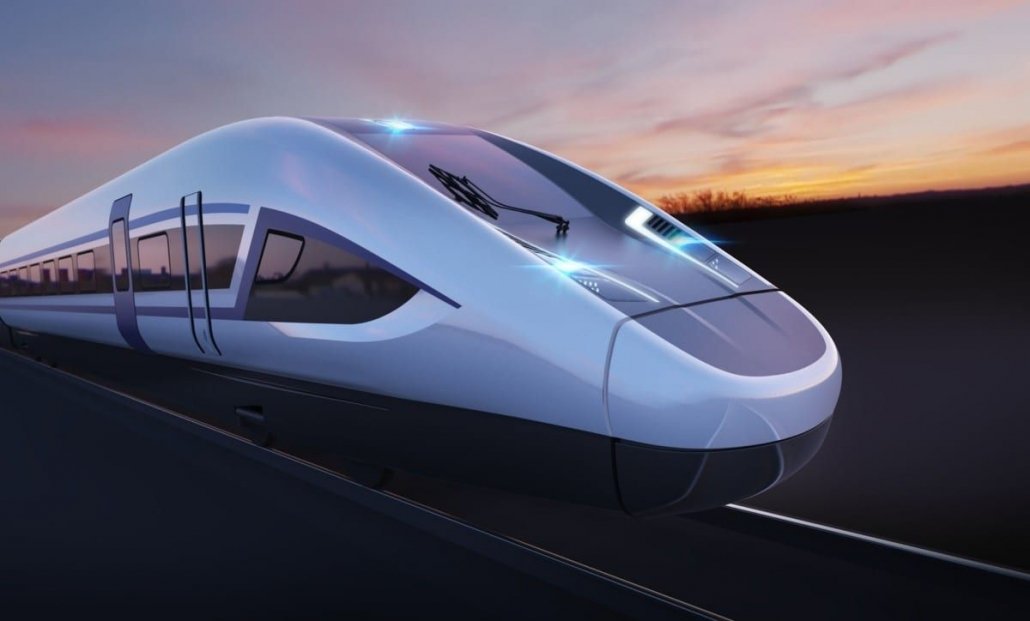
High Speed 2
How are ports being developed?
As an island nation, ports are essential to the UK’s economy, facilitating trade, tourism, and the movement of goods and passengers. Ports are central in connecting the UK to global markets, handling a large proportion of the country’s trade and facilitating tourism.
- Freight Handling: The UK is one of the world’s largest maritime trade hubs, with its ports handling a significant volume of imports and exports. In 2023, UK ports handled 434.9 million tonnes of freight, including raw materials, manufactured goods, and consumer products. Ports like Felixstowe, Southampton, and Liverpool are vital for trade with Europe, Asia, and the Americas.
- Passenger Journeys: Ports are also key to passenger travel, especially for ferries and cruise ships. Ports such as Portsmouth, Dover, and Harwich handle millions of passengers each year, with Dover alone seeing around 12 million passengers annually, making it one of the busiest ferry ports in Europe. The tourism sector benefits from these ports, with large numbers of cruise ships arriving in ports like Southampton.
In the UK, ports are managed by private companies, public organisations, and independent port authorities. Approximately 120,000 people are employed in the UK’s port sector. This includes jobs in port operations, logistics, freight handling, engineering, security, and administration.
The graph below shows the volume of freight handled by UK ports. As you can see, there has been a decline in port traffic since 2000.
The decline in freight passing through UK ports is due to several factors:
- Brexit: New customs checks, tariffs, and regulations post-Brexit caused delays and increased costs, especially in Dover.
- Competition: European ports like Rotterdam and Antwerp are more efficient, often with direct EU access, making them more attractive for freight.
- Deindustrialisation: Reduced heavy industry in the UK means less import/export activity, leading to a drop in freight volume.
- Trade Patterns: The rise of just-in-time manufacturing favours Northern European ports, reducing UK port traffic.
- Infrastructure Issues: Many UK ports, especially older ones, lack the capacity for modern, larger ships, and outdated infrastructure contributes to delays and inefficiencies.
To address these challenges and maintain the UK’s position as a global trade hub, several steps have been taken to modernise port infrastructure:
Liverpool2: The Liverpool2 development, completed in 2016, is one of the most significant upgrades in the UK’s port sector. It is a £400 million deep-water container terminal that allows the port to handle some of the world’s largest container ships. This development has increased capacity and made Liverpool a more competitive player in global trade, especially for goods coming from the Americas.
- London Gateway: London Gateway is another major development. Opened in 2013, this £1.5 billion port terminal is located in Thurrock, Essex. It can handle the largest container vessels and offers direct links to global markets via the Thames. The port is highly automated, with state-of-the-art cranes and logistics facilities, making it one of the most efficient ports in Europe.

Liverpool2 and London Gateway have been designed to accommodate larger ships and provide more efficient handling of goods, vital to improving the UK’s competitiveness in global trade.
Several ports in the UK are planning or undergoing improvements to their infrastructure to cope with future demand:
- Hull: The Port of Hull, one of the UK’s busiest ports, is planning significant developments to boost its capacity and reduce environmental impact. It is investing in renewable energy infrastructure, such as wind turbine storage facilities, and upgrading its container handling facilities to handle larger ships and more freight. Additionally, plans to improve rail and road connectivity to The Port of Hull port are underway to ensure smoother transportation links. This includes the A63 Castle Street improvements as part of RIS2.
- Teesport: Located in the North East of England, Teesport is undergoing upgrades to improve its logistics and capacity, making it an increasingly important port for bulk and containerised freight.
- Southampton Port: Southampton is focusing on expanding its container terminal and improving its links to both rail and road networks, making it a vital gateway for goods entering the UK from the Far East.
Key Areas for Future Improvement:
- Environmental Sustainability: Several UK ports are prioritising environmental sustainability by reducing carbon emissions and supporting the country’s shift to renewable energy. An example is The Port of Hull, where Siemens invests in renewable energy infrastructure, including constructing wind turbine manufacturing facilities. The components produced at these facilities are then shipped to offshore wind farms, contributing to the UK’s growing renewable energy sector.
- Technological Upgrades: More ports are adopting automation and digital technologies to improve port management, reduce congestion, and increase operational efficiency.
How are airports being developed?
Airports contribute approximately 3-4% of the UK’s GDP, which is crucial to the nation’s economic development. In 2024, around 600,000 flights departed the UK, carrying 240 million passengers. Additionally, UK airports handle approximately 2 million tonnes of freight annually, highlighting their significance in passenger travel and global trade.
Heathrow Airport Expansion
Heathrow is the UK’s largest airport, handling over 83 million passengers annually. In 2018, the House of Commons voted in favour of a third runway for Heathrow. The project faced legal challenges in 202, and the Court of Appeal ruled the plans unlawful due to climate change commitments. The Supreme Court then overturned this in December 2020. The new Labour Government confirmed support for a third runway in January 2025, with plans to speed up the process and complete the project by 2035.
The additional runway aims to reduce congestion and increase capacity. The proposal is very controversial due to its social and environmental impact. However, it will create thousands of jobs and boost the local economy.
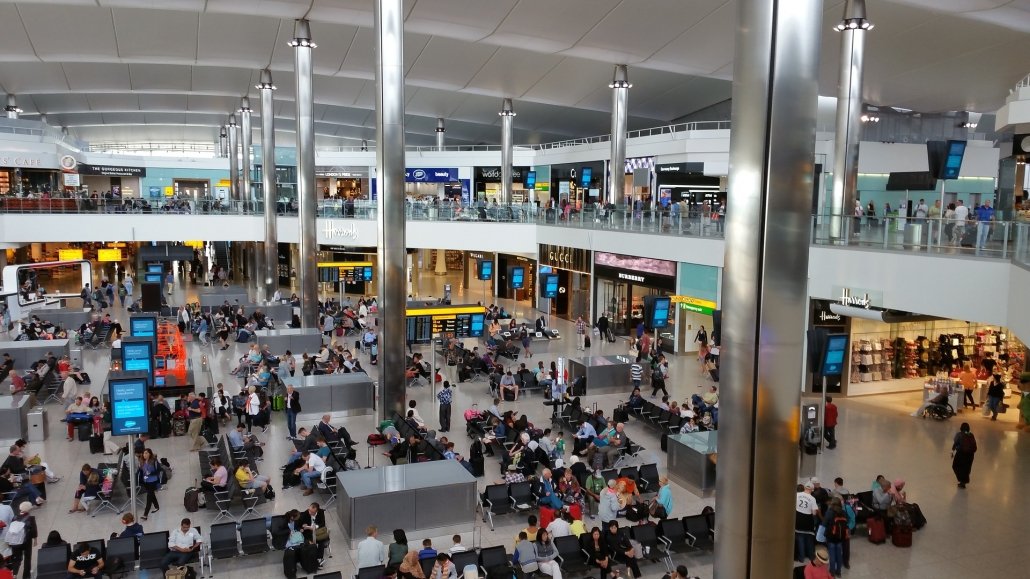
Passenger terminal at Heathrow Airport
Advantages of a Third Runway at Heathrow
Economic:
- Increased capacity: A third runway would enable Heathrow to handle more flights, boosting trade, tourism, and connectivity.
- Job creation: The construction and operation of the runway would create thousands of jobs, both directly and in supporting industries.
- Boost to economy: More flights can attract investment, improve the UK’s trade links, and stimulate regional economic growth.
Social:
- Improved connectivity: A third runway would provide better global connectivity, benefiting both business and leisure travel.
- Enhanced services: The increased capacity may improve the passenger experience, reduce congestion, and increase overall airport efficiency.
Environmental:
- Efficient use of existing infrastructure: Expanding Heathrow’s capacity may be more sustainable than building new airports, reducing the need for major new developments.
Disadvantages of a Third Runway at Heathrow
Economic:
- High costs: The expansion is a costly project, requiring significant infrastructure investment and potentially causing financial strain.
- Risk of oversupply: There is uncertainty about whether increased capacity would meet future demand, making it a potentially risky long-term investment.
Social:
- Displacement of communities: The expansion may lead to the displacement of local communities, including residents affected by noise and construction.
- Increased congestion: While capacity would increase, the surrounding areas may experience more congestion due to increased air traffic and passenger numbers.
Environmental:
- Increased carbon emissions: A third runway would lead to more flights, increasing the UK’s carbon footprint and making it harder to meet climate change targets.
- Noise pollution: The expansion could raise noise levels for nearby residents, affecting their quality of life.
- Impact on local ecosystems: The runway construction could harm local wildlife and natural habitats.
Other airport developments include:
- Gatwick, Britain’s second-busiest airport, has been given a conditional go-ahead to expand. Gatwick intends to extract more capacity from the main runway to boost passenger numbers by one-third, from around 45 million annually to around 60 million. In addition, by moving the existing standby runway 12 metres north – further away from the main one – it will be possible to use both at the same time.
- The expansion of Terminal 2 at Manchester Airport is a major project that will allow Manchester to accommodate more passengers, with additional retail spaces, baggage handling systems, and improved security measures. The project, valued at over £1 billion, is part of a broader vision to make Manchester the “global gateway” for the North.
- London City Airport has significantly upgraded its terminal to streamline passenger flow and increase efficiency. These upgrades are designed to allow the airport to handle more passengers while maintaining a high level of service for its primary business clientele.

